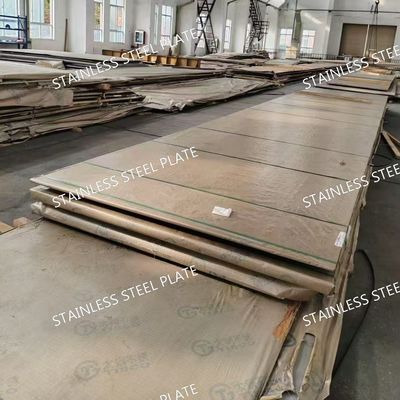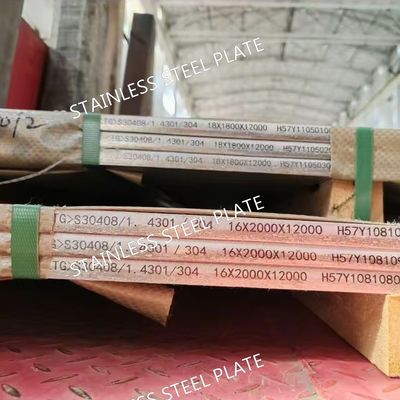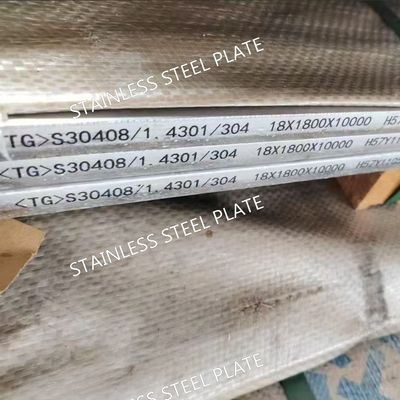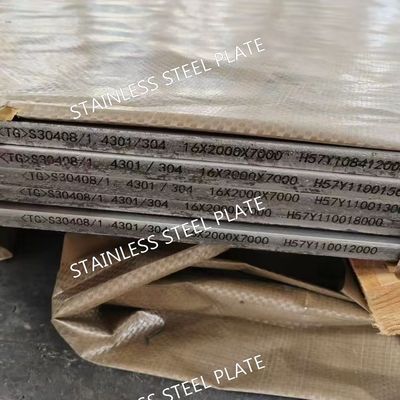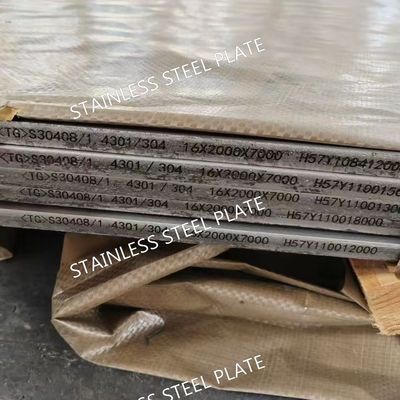Introduction
Stainless steel has long been the material of choice for industries that demand superior performance in harsh environments. Among the many varieties of stainless steel, 317L stainless steel stands out for its exceptional resistance to corrosion, particularly in environments prone to pitting and crevice corrosion. This makes it an ideal choice for industries such as chemical processing, marine engineering, food processing, and petrochemicals.
317L stainless steel is a low-carbon version of 317 stainless steel, offering enhanced resistance to sensitization and intergranular corrosion, especially during welding. Its high molybdenum content (3-4%) and increased levels of nickel (11-15%) compared to standard grades like 304 and 316 stainless steels provide outstanding protection in environments where chloride ions and acidic conditions are prevalent. This article explores the features, properties, and advantages of 317L stainless steel plate, particularly its resistance to pitting and crevice corrosion.
Chemical Composition of 317L Stainless Steel
The superior corrosion resistance of 317L stainless steel is due to its carefully balanced alloy composition. The high levels of molybdenum (Mo) and nickel (Ni) in this alloy provide robust resistance to localized corrosion, which is a primary concern in industries that deal with acidic solutions, chloride-rich environments, and high-temperature conditions.
| Element |
Composition Range (%) |
Function |
| Chromium (Cr) |
18.0 – 20.0 |
Forms a stable passive oxide layer that protects against general corrosion. |
| Nickel (Ni) |
11.0 – 15.0 |
Improves toughness, enhances resistance to stress corrosion cracking, and stabilizes the austenitic structure. |
| Molybdenum (Mo) |
3.0 – 4.0 |
Improves resistance to pitting and crevice corrosion, particularly in chloride environments. |
| Manganese (Mn) |
≤ 2.0 |
Improves formability and helps stabilize the austenitic structure. |
| Silicon (Si) |
≤ 1.0 |
Enhances oxidation resistance at high temperatures. |
| Carbon (C) |
≤ 0.03 |
Low carbon content prevents carbide precipitation during welding, reducing the risk of intergranular corrosion. |
| Sulfur (S) |
≤ 0.030 |
Minimizes the risk of contamination and maintains ductility. |
| Phosphorus (P) |
≤ 0.045 |
Controlled to avoid embrittlement and maintain mechanical properties. |
| Iron (Fe) |
Balance |
The primary element of the alloy, providing strength and structure. |
This alloy chemistry contributes to the high resistance of 317L stainless steel to both pitting and crevice corrosion, which are critical issues in environments such as seawater, chemical processing, and other aggressive environments.
Pitting and Crevice Corrosion Resistance
Pitting corrosion and crevice corrosion are two forms of localized corrosion that can significantly reduce the service life of materials in harsh environments. Pitting corrosion occurs when small pits or holes form on the surface of the material, usually due to chloride ions or other aggressive chemicals. Crevice corrosion develops in narrow, stagnant spaces where the access of oxygen is limited, such as under gaskets, washers, or bolts. These forms of corrosion are particularly damaging in marine and chemical applications, where equipment is constantly exposed to corrosive elements.
317L Stainless Steel and Pitting Resistance
317L stainless steel offers excellent pitting resistance due to its high molybdenum content, which plays a key role in enhancing the material's ability to resist attack from chloride ions. Molybdenum helps prevent the formation of pits by stabilizing the oxide film that forms naturally on the steel surface, making it more resistant to aggressive environments.
In addition to molybdenum, the high nickel content in 317L enhances its ability to withstand pitting corrosion in environments that contain sulfuric acid, phosphoric acid, or seawater. The combination of these elements gives 317L stainless steel one of the highest pitting resistance equivalent numbers (PREN) among stainless steel alloys.
Crevice Corrosion Resistance
Crevice corrosion occurs in confined areas where the oxygen level is lower than in the surrounding area, allowing corrosion to accelerate in the restricted zone. 317L stainless steel's excellent resistance to crevice corrosion makes it a preferred choice for heat exchangers, pressure vessels, and other equipment exposed to harsh environments. The material’s stable passive oxide layer, which is formed by the chromium and molybdenum content, helps protect the material from this type of localized corrosion.
The PREN of 317L stainless steel, which combines chromium, molybdenum, and nitrogen content, allows the material to withstand even the most aggressive crevice environments, ensuring longevity and reliability in chemical and marine applications.
Mechanical and Physical Properties of 317L Stainless Steel
In addition to its outstanding resistance to pitting and crevice corrosion, 317L stainless steel offers excellent mechanical properties that make it suitable for a wide range of industrial applications. The alloy is particularly valuable in heat exchangers, chemical reactors, and piping systems where both corrosion resistance and mechanical strength are crucial.
| Property |
Value (Typical) |
Importance for Industrial Applications |
| Tensile Strength |
515 MPa (75 ksi) |
High strength to withstand mechanical stress and pressure in industrial systems. |
| Yield Strength (0.2% offset) |
205 MPa (30 ksi) |
Ensures the material maintains structural integrity under load. |
| Elongation |
35-40% |
Indicates the ability to deform without failure, important for forming and welding. |
| Hardness (Brinell) |
≤ 217 HB |
Provides resistance to wear and tear in industrial applications. |
| Modulus of Elasticity |
193 GPa |
High rigidity and stability in load-bearing applications. |
| Density |
7.9 g/cm³ |
Helps calculate weight and provides an understanding of material strength. |
| Thermal Conductivity |
16 W/m·K |
Ensures efficient heat transfer, important for heat exchangers. |
| Specific Heat |
500 J/kg·K |
Essential for understanding thermal behavior under fluctuating temperatures. |
| Coefficient of Thermal Expansion |
16.0 × 10⁻⁶ /°C |
Important for designing systems that must tolerate thermal expansion. |
These properties make 317L stainless steel an ideal material for applications where both corrosion resistance and mechanical performance are essential.
Applications of 317L Stainless Steel Plates
Due to its exceptional corrosion resistance, particularly in the presence of chlorides and acids, 317L stainless steel plate is widely used in a variety of industries that require materials to endure harsh environments.
1. Chemical Processing Equipment
In chemical plants, heat exchangers, reactors, and storage tanks often come into contact with aggressive chemicals, including sulfuric acid, hydrochloric acid, and chlorine. 317L stainless steel is resistant to these corrosive agents, providing durability and reliability in critical chemical processes.
2. Marine Applications
For components exposed to seawater, such as boat hulls, marine pipelines, and offshore platforms, 317L stainless steel provides excellent resistance to corrosion caused by saltwater and chloride ions. Its ability to withstand both pitting and crevice corrosion in these environments ensures the long-term performance of marine equipment.
3. Pulp and Paper Industry
In pulp and paper mills, the combination of high-temperature steam and corrosive chemicals can severely damage equipment. 317L stainless steel is used for heat exchangers, evaporators, and piping systems where both corrosion resistance and heat resistance are required.
4. Food and Dairy Processing
Food and dairy industries require stainless steel that not only resists corrosion but is also safe for contact with food products. 317L stainless steel is used in heat exchangers and tanks where resistance to acidic food products (like citrus juice or vinegar) is necessary. Its smooth surface finish helps in maintaining hygiene standards.
5. Petrochemical Industry
The petrochemical industry uses 317L stainless steel for heat exchangers and reactors that are exposed to corrosive substances like hydrocarbons, acids, and chlorine compounds. The resistance to pitting and crevice corrosion ensures the longevity of the equipment in these challenging environments.
Advantages of 317L Stainless Steel Plate for Industrial Applications
-
Superior Corrosion Resistance:
The high molybdenum and nickel content in 317L stainless steel makes it highly resistant to both pitting and crevice corrosion, particularly in chloride and acid environments.
-
Durability in Harsh Environments:
317L stainless steel performs well even in high-temperature and chemically aggressive environments, making it ideal for heat exchangers and reactors in industries such as chemical processing, marine, and petrochemicals.
-
Ease of Fabrication:
The low carbon content in 317L stainless steel improves its weldability and machinability, making it easier to fabricate into custom shapes for specialized industrial applications.
-
Long-Term Performance:
The material's ability to maintain its strength, form, and resistance to corrosion over extended periods reduces maintenance costs and downtime in industrial systems
 Raian IonescuCalidad material muy buena. tenemos cooperar más de 10 años. Negocian clases de las porciones de material de acero. Toda la calidad material buena. Ellos deber para toda la calidad material. Estamos acepillando para continuar cooperando con ellos en el futuro
Raian IonescuCalidad material muy buena. tenemos cooperar más de 10 años. Negocian clases de las porciones de material de acero. Toda la calidad material buena. Ellos deber para toda la calidad material. Estamos acepillando para continuar cooperando con ellos en el futuro



